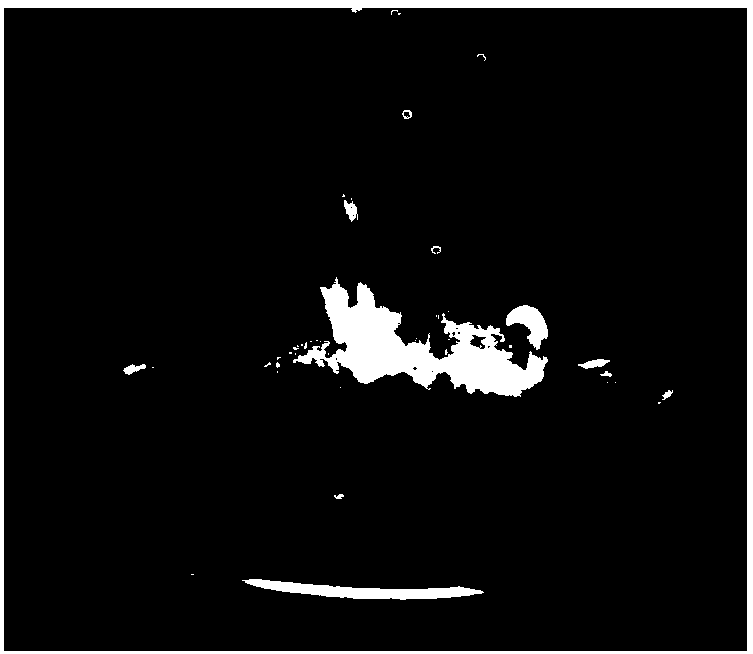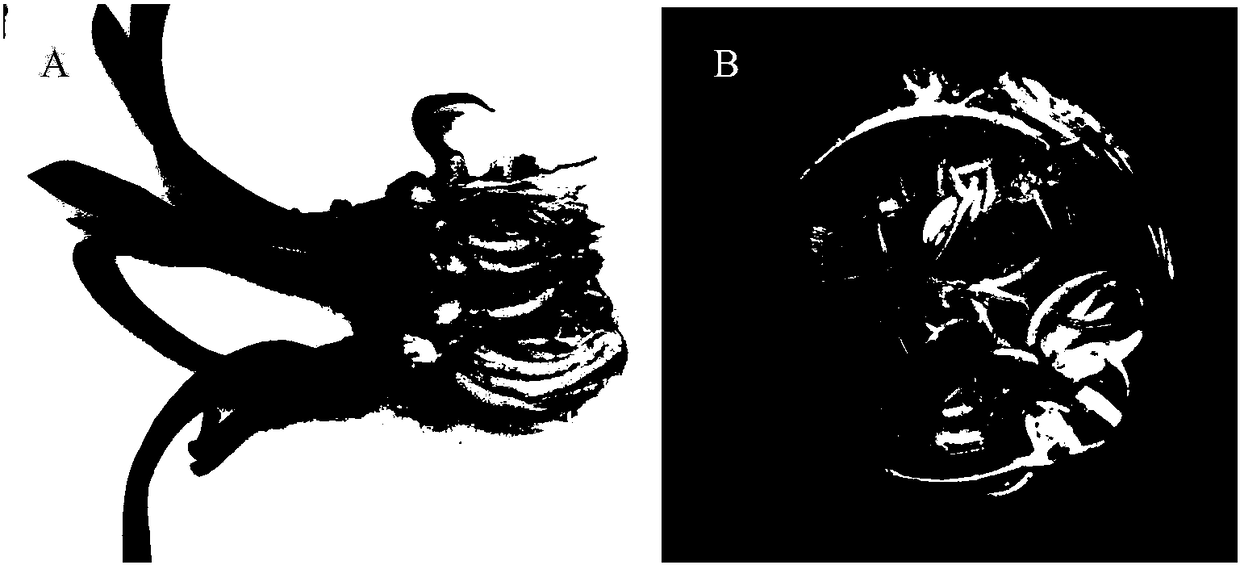A method for establishing a blue crystal flower bulblet regeneration system with stamens as explants
A technology of explants and small bulbs, which is applied in the field of establishing the regeneration system of blue crystal flower small bulbs, to achieve the effect of reducing pollution rate, low pollution rate and shortening the propagation cycle
- Summary
- Abstract
- Description
- Claims
- Application Information
AI Technical Summary
Problems solved by technology
Method used
Image
Examples
Embodiment 1
[0039] (1) Extraction and processing of explants
[0040] During the flowering period of the blue crystal flower in June, young flower buds (buds not opened) with a length of 1.5-2.5 cm were picked, placed in a sealed bag and refrigerated in a refrigerator at 4°C for 1 week.
[0041] Transfer the refrigerated flower bud material to a beaker, soak in water with a little Tween and detergent added dropwise for 15 minutes, then cover the mouth of the beaker with gauze, and rinse the gauze with running water for 1 hour. Soak the washed explants in (v / v) 75% ethanol for 30s, and then soak them in (w / v) 0.1% mercuric chloride for 8min. Reagents are fully exposed.
[0042] Finally, rinse 3 times with sterile water, each time not less than 3 minutes, until no obvious foam appears. Take out the explants with tweezers, place them on a sterile operating table, blot the surface moisture with filter paper, and wait for inoculation.
[0043] (2) Explant inoculation and callus induction
...
Embodiment 2
[0056] (1) Extraction and processing of explants
[0057] In the flowering period of the blue crystal flower in June, young flower buds with a length of 1.5-2.5 cm (buds are not opened) are collected, placed in a sealed bag and refrigerated in a refrigerator at 4°C for 1 week.
[0058] The refrigerated flower bud material was transferred to a beaker, soaked in water with a little Tween and detergent added dropwise for 15 minutes, then covered the mouth of the beaker with gauze, and rinsed with running water for 1.5 hours through the gauze. Soak the washed explants in (v / v) 75% ethanol for 30s, and then soak them in (w / v) 0.1% mercuric chloride for 10min. Reagents are fully exposed.
[0059] Finally, rinse 4 times with sterile water, each time not less than 3 minutes, until no obvious foam appears. Take out the explants with tweezers, place them on a sterile operating table, blot the surface moisture with filter paper, and wait for inoculation.
[0060] (2) Explant inoculati...
Embodiment 3
[0073] (1) Extraction and processing of explants
[0074] In the flowering period of the blue crystal flower in June, young flower buds with a length of 1.5-2.5 cm (buds are not opened) are collected, placed in a sealed bag and refrigerated in a refrigerator at 4°C for 1 week.
[0075]The refrigerated flower bud material was transferred to a beaker, soaked in water with a little Tween and detergent added dropwise for 20 minutes, then covered the mouth of the beaker with gauze, and rinsed with running water for 1.5 hours through the gauze. Soak the washed explants in (v / v) 75% ethanol for 30s, and then soak them in (w / v) 0.1% mercuric chloride for 10min. Reagents are fully exposed.
[0076] Finally, rinse with sterile water 5 times, each time not less than 3 minutes, until no obvious foam appears. Take out the explants with tweezers, place them on a sterile operating table, blot the surface moisture with filter paper, and wait for inoculation.
[0077] (2) Explant inoculatio...
PUM
 Login to View More
Login to View More Abstract
Description
Claims
Application Information
 Login to View More
Login to View More - R&D
- Intellectual Property
- Life Sciences
- Materials
- Tech Scout
- Unparalleled Data Quality
- Higher Quality Content
- 60% Fewer Hallucinations
Browse by: Latest US Patents, China's latest patents, Technical Efficacy Thesaurus, Application Domain, Technology Topic, Popular Technical Reports.
© 2025 PatSnap. All rights reserved.Legal|Privacy policy|Modern Slavery Act Transparency Statement|Sitemap|About US| Contact US: help@patsnap.com



